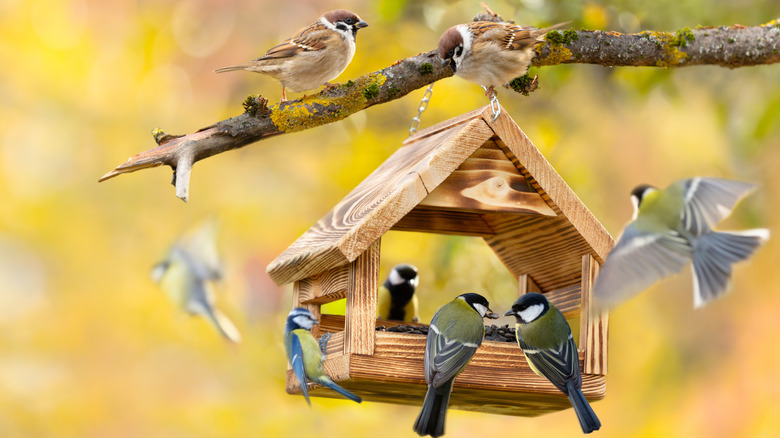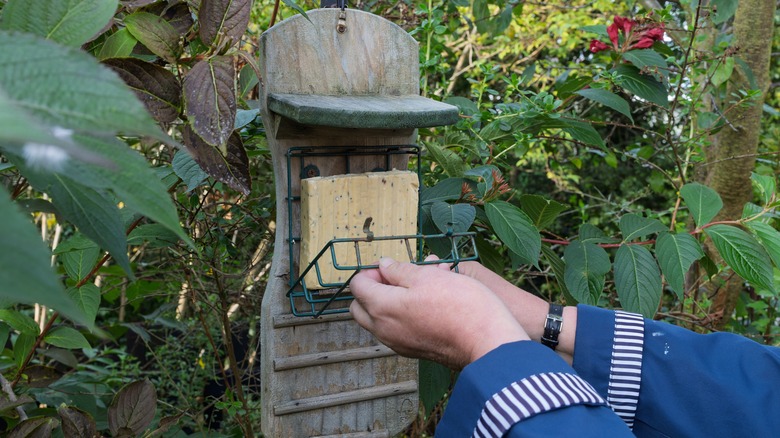The Seed Product That Keeps Birds From Tossing And Making A Mess At Your Feeder
We may receive a commission on purchases made from links.
Fans of backyard bird feeding know the frustration of having showers of uneaten seeds thrown far and wide by picky avian visitors. Not only are the errant seeds messy, but many of them tend to sprout where they've fallen, letting the mess live on in the form of weeds. Instead of rethinking putting a bird feeder in your yard, try swapping your bagged seeds for a bird block. These bricks or cylinders of birdseed are held together with a non-toxic binding agent like gelatin or pectin, so birds can easily peck a meal out of the block with much less waste than you'd get with loose seeds. Whether you purchase your blocks or make some from scratch, bird blocks are a great way to enjoy the benefits of having a bird feeder in your yard.
While seed blocks can often be placed inside your existing bird feeder, not every feeder is right for a seed block. Since the seeds aren't fluid, you'll need a feeder with some sort of open platform. Additionally, a feeder with a roof to keep moisture out is essential for keeping the blocks intact. If you have a hanging platform feeder without a roof, purchase a cover like the Manlikamu Bird Feeder Baffle to protect the seed block from weather and squirrels. Cylindrical blocks are common, and feeders like the Kingsyard Adjustable Platform Bird Feeder are perfect for holding them securely. With seed blocks costing up to eight times as much as loose seed, you want to make sure you protect your block from both weather and gravity.
DIY your own seed block for your bird feeder
Even with the possibility of saving money over time, it can be daunting to shell out considerably more cash upfront by opting for a bird block instead of bagged seed. For a more affordable option, consider making your own bird blocks from bagged birdseed and gelatin. You can use a commercial seed mix or DIY your very own birdseed mix. To make your seed block, you'll need 6 cups of birdseed, 1 cup of cold water, and 1 ½ ounces of gelatin (6 ¼ -ounce packets). You'll also need either a double boiler or a saucepan with a small heat-safe bowl that can sit on top. Additionally, be sure to gather your non-stick spray, a large mixing bowl, rubber gloves, and a container to use as your mold.
Pour the water into your heat-safe bowl. Then, add the gelatin slowly, and stir until it is fully mixed. Set the bowl onto your double boiler or saucepan of boiling water, and stir the gelatin until it melts and loses any grainy appearance. Take it off the heat, and let the mixture cool for five minutes.
Coat the inside of your mixing bowl and mold with non-stick spray, and add the seeds into the mixing bowl. Pour the melted gelatin mixture over the surface of the seeds. Don your gloves, and mix the seeds and gelatin together with your hands. When the seeds look evenly coated, press the mixture lightly into your mold. Let the mold sit for about three hours. Then, remove the block from the mold, and insert it into your bird feeder.

